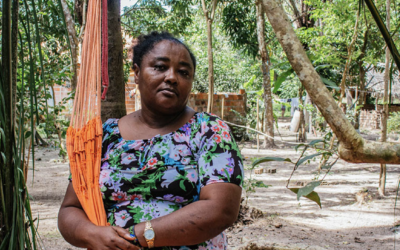Two days after a torrent of mud pouring from a ruptured mining dam left at least 58 dead and 305 missing in the Brazilian town of Brumadinho, residents had to evacuate Sunday as a second dam threatened to collapse, spurring panic and outrage at what residents called a lack of accountability for Brazil’s powerful mining industry.
Sirens sounded before dawn, set off by heavy rains and dangerously high water levels at a dam at an iron ore complex owned by the Brazilian mining giant Vale S.A. Rescue workers looking for survivors from Friday’s disaster turned instead to evacuating residents to higher ground.
By the end of the day, residents were allowed to return to their homes. But for many Brazilians, this latest warning was further evidence that the system regulating the mining industry is broken, risking people’s lives and endangering the environment.
Still, few expect the rules to tighten under Brazil’s new president, Jair Bolsonaro, who promised during his campaign to restrict fines and ease regulations on mining and other industries that exploit natural resources.
There are more than 400 mining dams like the one that broke in Brumadinho in the state of Minas Gerais, the hub of Brazil’s mining industry. Three years ago, another such mining dam burst in the city of Mariana, 75 miles away, killing 19 people and unleashing one of the worst environmental disasters in Brazilian history. That dam was jointly owned by Vale and the Anglo-Australian mining company BHP.
Some of the dams have been deemed “unstable” but have continued operating for years, said Bruno Milanez, a professor of industrial engineering at the Federal University of Juiz de Fora. What is frightening, he said, is that the dams that broke — in Mariana and Brumadinho — were certified as “stable.”
In Brazil, independent auditors verify the safety of dams through regular inspections and analysis of written records. The problem, according to experts like Mr. Milanez and Luiz Jardim, a geography professor at the State University of Rio de Janeiro, is that the mining companies choose and contract with the auditors and provide all of the documentation that they analyze.
And that has not changed in the three years since the Mariana disaster, Mr. Jardim said. If anything, the regulatory framework in the state has become looser, as a drop in international commodities prices has prompted mining companies to cut costs, in some cases leading them to fill dams beyond capacity, reduce safety budgets and fail to put emergency systems in place, experts said.
“These are not exceptional events. Dams rupture. More will come,” Mr. Jardim said. “Either the monitoring system is flawed, or companies have figured out how to work around it.”
Vale’s chief executive, Fabio Schvartsman, said the cause of Friday’s breach was still being investigated. The Brumadinho dam has been inactive for three years and had been certified as stable as recently as this past December.





